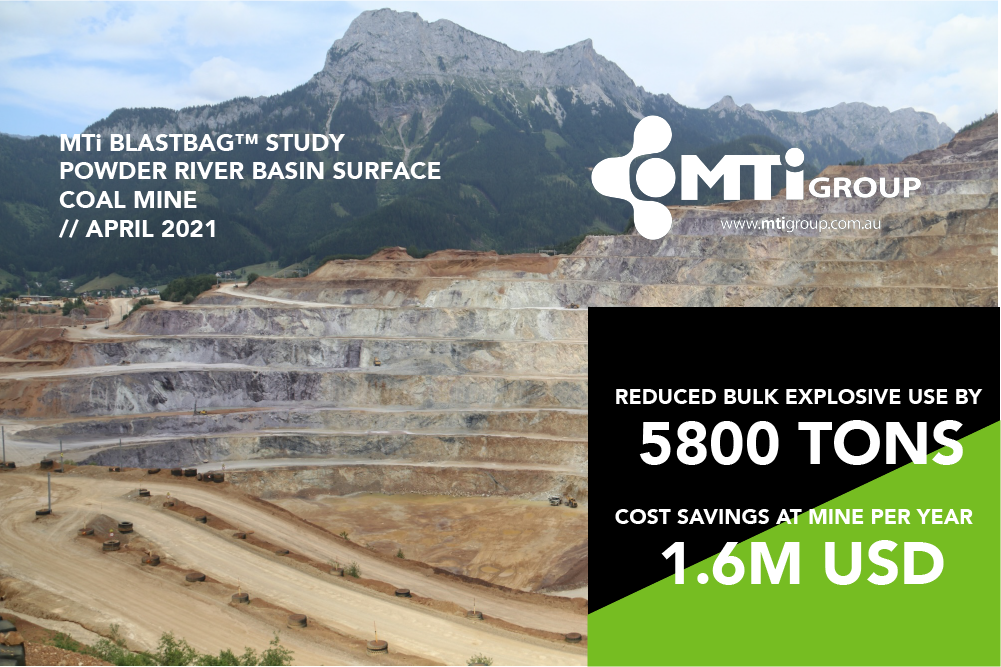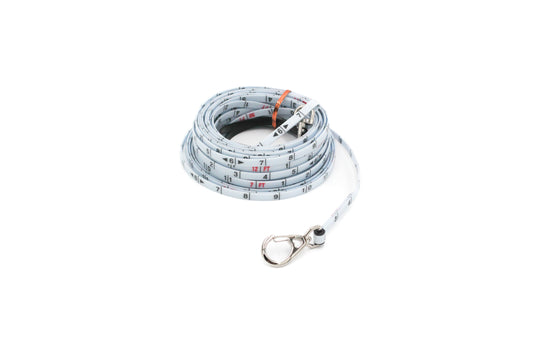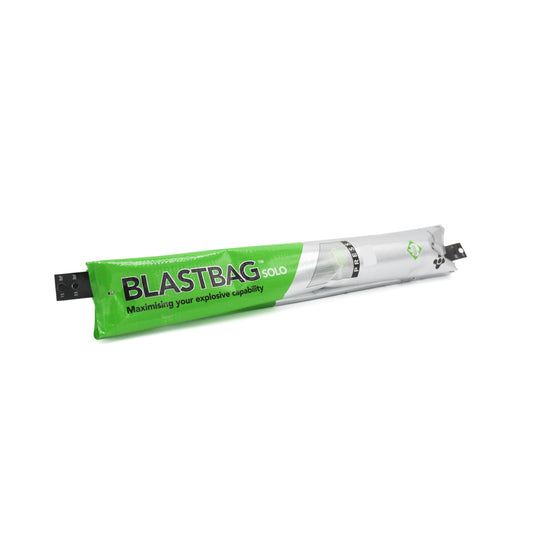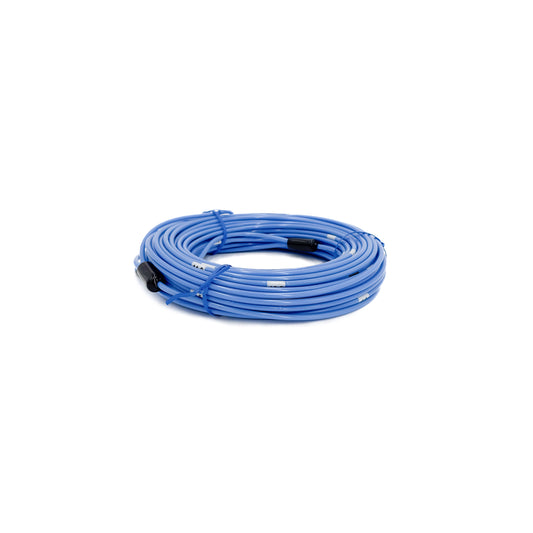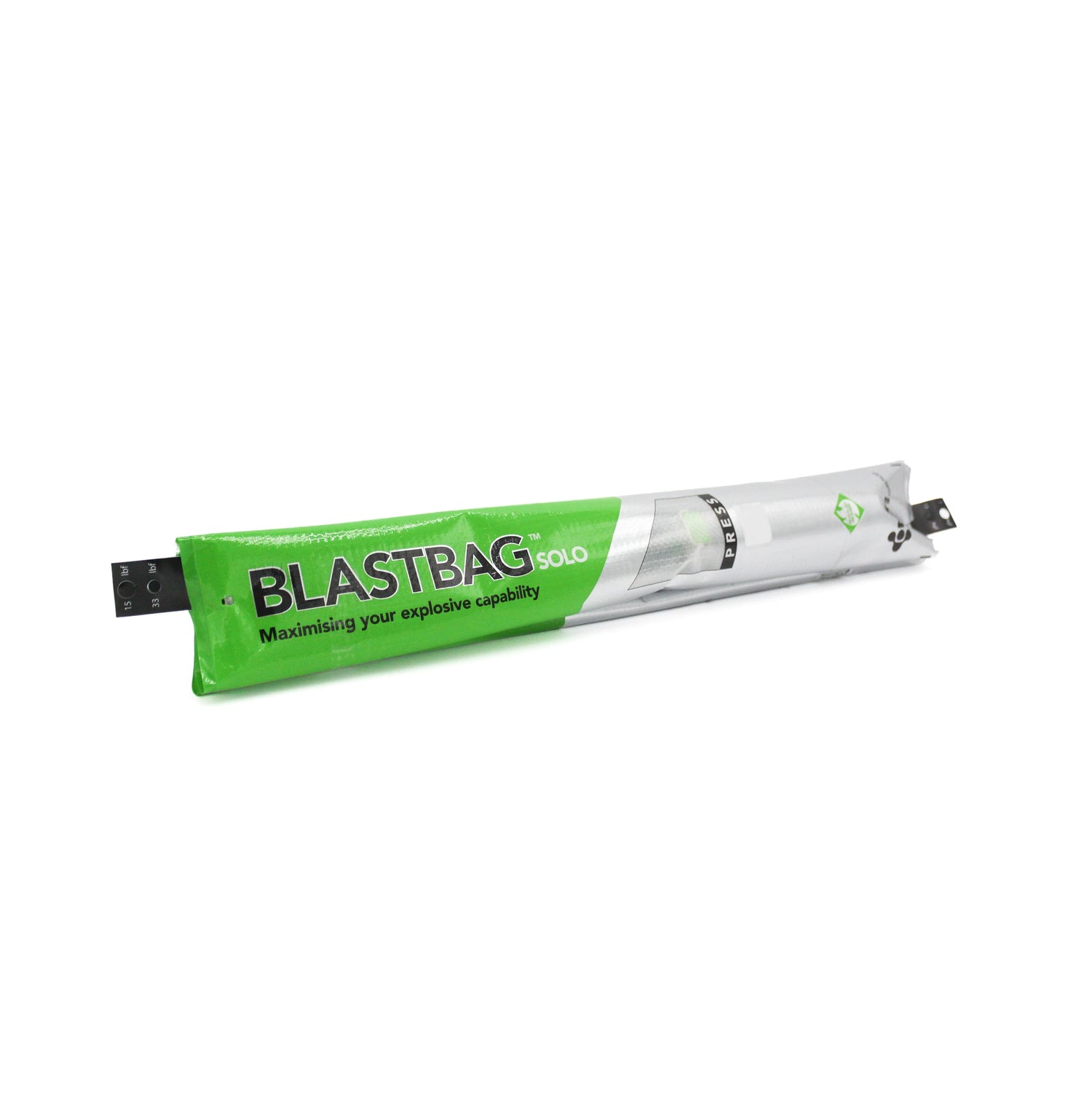THE CHALLENGE
With commodity price pressures ever-present, our client, a large coal miner in the Powder River Basin, sought to address the large costs associated with their blasting process by reducing the amount of bulk explosives required in their overburden shots. It was critical that any adaptation to their process would still generate an equivalent Velocity of Detonation (VOD) to achieve their desired level of fragmentation in the overburden, as well as minimize overbreak and material movement. Through a series of test blasts conducted by an independent consultant, Respec, the study sought to review blasting outcomes with and without air decks and consequently the effect on blasting performance with a reduced powder factor.
THE SOLUTION
Working with coarse-grained cross-bedded sandstone and carbonaceous shale on a typical 115ft bench, the bench was drilled with 12" holes in a 35.1x38ft burden and spacing pattern. Using a 50/50 emulsion blend pumped to a stemming height of 53ft with 2 electronic detonators in each hole, this conventional blast design was observed to produce a typical powder factor of 0.66lbs/CYD. A scale to compare overburden extraction was also established, typically measured by a site-specific digability index.
In order to reduce the bulk explosives and powder factor, the use of an air deck between the stemming and explosive column was evaluated as the preferred solution. To achieve this, MTi BLASTBAG™ gasbags were deployed in each hole to create the air deck. Over 4 consecutive test blasts, 3 different decking designs were assessed, reducing the explosive column by 3ft in the first two designs and 5ft in the last, varying the stemming height across all blasts.
SITE PROFILE
- Material: sandstone and carbonaceous shale
- Bench height: 115ft
- Burden pattern: 12" holes, 35.1x38ft
- Working Powder factor: 0.66lbs/CYD
- Explosives: 50/50 Emulsion blend
METHODOLOGY
To reduce the powder factor, an air deck was introduced. Four blasts were performed on an identical blast design with three different decking configurations (1 control) tested. The explosive column was reduced by 3ft and 5ft respectively. After loading, each explosive height was checked, and drilling patterns observed less than 2% variance.
TRADITIONAL VS. AIR-DECK DESIGNS
- Explosive column: Traditional (62ft), Design 1 (59ft), Design 2 (59ft), Design 3 (57ft)
- Stemming: Traditional (53ft), Design 1 (48ft), Design 2 (40ft), Design 3 (53ft)
- Air-deck length: Traditional (0ft), Design 1 (4-8ft), Design 2 (14-16ft), Design 3 (5ft)
TEST BLAST DESIGNS
The different air deck designs were applied to different sections of the test blasts and to different blasts to allow for the comparison of the results. After loading, explosive heights were checked prior to placing an MTi BLASTBAG™ gasbag in the desired position. Drill cuttings were loaded on top of the gasbag as stemming material. To ensure comparable results, the as-drilled patterns were compared to design with variances from the original design not exceeding 2%. This was considered to have a negligible contribution to changes in blast performance. Witness strings were attached to the MTi BLASTBAGS™ gasbags to ensure there was no displacement of the stemming columns and air decks. In each test blast, VOD measurements were taken to ensure adequate bulk explosive performance.
THE RESULTS
In all test blasts, the measured VOD was consistent with the specifications of the bulk explosive, with results showing a comparable blasting performance. Overburden fragmentation was not adversely affected, neither was the payload achieved and the cycle time taken to excavate the waste. From the results in Test Blast 3 (Illustrated alongside), we can observe the performance which was attained with a reduced powder factor of 0.64lbs/CYD.
These results were again replicated and validated in Test Blast 4.
Based on these conclusive observations, the study establishes that a reduction in powder factor can be gained without compromising the overall effectiveness of the blast. This represents a substantial cost-saving opportunity for the mine site, which has since adopted the use of MTi BLASTBAGS™ in their overburden blasts. The mine estimates that as a result, their explosive consumption can be reduced by as much as 5800 tons per year, equating to approximately USD 1.6 million in savings.
The study also concludes that properly designed air decks do not adversely affect the bulk explosive performance and furthermore notes that any additional time taken to deploy the gasbags is non-consequential and considered negligible, highlighting the positive cost-benefit of their use.
Since the study, the miner has adopted air decking in all their overburden shots with the intention of starting a trial in their coal later this year. Two other miners in the region have also trialed similar tests for overburden and coal shots—both producing successful results. One of the miners has fully adopted air decking in their blasting procedures while the other is in advanced trials.
